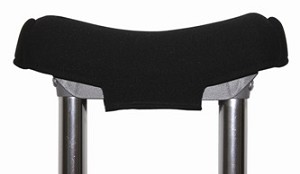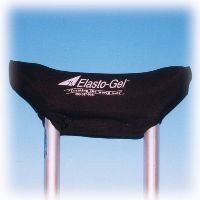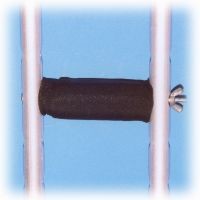- Providing Helpful Healthcare Products Since 1999 | Our Hours: 8 AM - 5 PM CST Mon - Fri
- +1-877-750-0376
Reduce pressure from crutches with soft crutch pads
Wheelchair trays to hold your notes, meals and drinks
June 26, 2013Take matters into your own hands with the right portable ramp
June 26, 2013Reduce pressure from crutches with soft crutch pads
Crutches can cause skin irritation and even nerve damage to the hands and underarms if not used correctly. Using crutch pads can reduce soreness and pain.
After a few days of using crutches, people with mobility limitations or leg injuries will find that the crutch’s points of pressure can cause soreness and pain for the skin, bony protrusions and nerves. This is particularly evident with long-term use. Obtaining the crutch pad that is right for you will help reduce pain and allow already-existing abrasions to heal.
How to protect yourself from pressure
You may find that the area between the thumb and the finger can be problematic, as well as the underarm. According to WebMD, putting a lot of constant pressure under the arm while using a crutch can actually damage the nerve. For this reason, it is recommended to keep a space of two or three finger widths in between the underarm and the top of the crutch and push down with your hands to lift yourself. However, you still may occasionally inadvertently put pressure on the underarm. Our crutch top and crutch handle pads are an effective solution to help protect those nerves and skin areas when you need them.
Cushion the underarm
The Gel Crutch Top Covers are placed over the existing top foam of your crutch and are secured using Velcro. The covers of these pads are made of chloroprene rubber and nylon. The open cell foam and polyurethane solid gel on the inside distributes pressure more equally to protect bony prominences and reduce shear pressure related problems.
The Crutch Mate Gel Arm Pads are made with glycerin gel for use for long periods. It requires removal of the already-existing crutch top pad and is secured with a Velcro-like closure.
Pads for your crutch handles
While it is important to protect those sensitive underarms, it is equally important to protect the hands, since most of the pressure should be on the hands while the crutch is in use. The Gel Crutch Mate Hand Pads are made of resilient glycerin gel to provide long-lasting protection for your hands. Remove the already-existing hand pad, slip on the Gel Crutch Mate Hand Pad and reassemble your crutch. This works for both traditional and forearm crutches.
From the same makers of the Gel Crutch Top Covers, we also sell the Gel Forearm Crutch Handle Covers. They are also covered with a rubber and nylon surface, under which there is a layer of open cell foam and polyurethane solid gel. Apply it over the existing hand pad of your forearm crutch with a handy zipper closure.
Your experience with crutches does not have to be uncomfortable. If you use them correctly, concentrating pressure on the hands as opposed to the underarms, and obtain the right padding, you will be well on your way to walking with greater ease and comfort.




